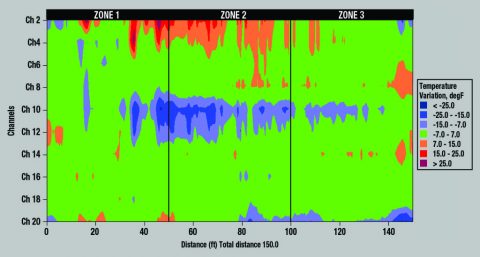Take the guesswork out of oven control and gain extra safety and quality control measures with an oven temperature profiler from Reading Thermal.
Reading Thermal, headquartered in Sinking Spring, Pennsylvania, has been focused on commercial baking process measurements for 25+ years. We manufacture and support the SCORPION® 2 Data Logger, a profiling system that has become a standard in the baking industry.
The SCORPION® 2 enables you to monitor actual in-process conditions and get the information you need to correct any problems with your products and maintain optimal process control. This powerful diagnostic tool can help you understand and improve your proofing, baking, cooling, and freezing processes.
Measuring Oven Temperature
When you produce bread, rolls, biscuits, hamburger buns, hot dog buns, cakes, or other bread products, you know that several of the stages are temperature-dependent, such as oven-spring, reduction of dough/batter moisture, and color formation.
The Reading Thermal SCORPION® 2 Temperature Sensor Array, when connected to the SCORPION® 2 Data Logger, travels through the oven with the product (with the oven under full load) and measures temperature at product level, delivering an accurate representation of what your product is experiencing over time.
There are 2 types of pluggable temperature sensors. The Air/Conveyor sensor is designed for solid or tight mesh conveyors and measures the surface temperature as well as the air temperature directly above the conveyor. The Air/Air sensor is meant for open mesh conveyors and measures upper air temperatures immediately above the conveyor, and lower air temperatures of the air rising through the conveyor.
Case Studies
- One bakery ran its Kaiser rolls through a tunnel oven for 16 minutes. The SCORPION® 2 Data Logger and Temperature Sensor discovered that the products had already reached an internal temperature of 200°F after just 10 minutes of baking time. These results enabled the bakery to reduce the baking time and significantly increase capacity.
- Another large bakery wanted to determine the proper baking time for a wheat sandwich line it was making in an 84-foot continuous impingement tunnel oven that had eight zones. By using the SCORPION® 2 Data Logger, they discovered that internal dough temperatures had reached 200°F by 74% of the way through the baking cycle rather than at the target of 85%. By reducing overall oven temperatures an average of 15°F and slowing internal baking, the bakery saved thousands of dollars per month on natural gas.
Are you experiencing inconsistent product quality, moisture retention problems, uneven bakes, or low production capacity? Consider an oven temperature profiler from Reading Thermal to identify any issues and help you resolve them. Contact us online or call our headquarters in Sinking Spring, Pennsylvania, at (610) 678-5890 Ext. 2 to explore our innovative products.

